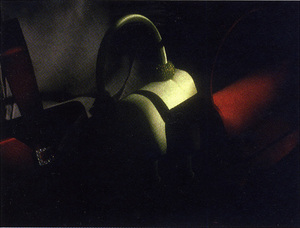This is an archive of the ArtCat Zine, 2007-2009. Please visit our new project, IDIOM.
Nathaniel Dorsky at MoMA
Three Shorts by Nathaniel Dorsky
8:15pm Thursday 3 December and 5pm Saturday 5 December 2008
MoMA - 11 West 53 Street, New York NY
$10
For the length of his time as a filmmaker, Nathaniel Dorsky has worked towards an ideal of an open cinematic form, as close to 20th century American poetry as to the lyrical abstractions of American avant-garde cinema. What Dorsky has for years theorized as a "polyvalent" cinema is one in which the language of film communicates without acquiescence to narrative or thematic structures, or the ascetic formalism of 70s minimal film. The majority of Dorsky's films are thus composed of an assemblage of photographed fragments from the filmmaker's life, sometimes collected over many years. The results are nothing if not beautiful, filled with a kind of exuberant impulse to relate what Dorksky has described as "stanzas" of documentary motion picture photography in a deeply sensual way. One could well criticize Dorsky for making art that is too beautiful. In Devotional Cinema, a short manifesto of sorts published in 2003, Dorsky describes cinema as a potentially holistic, quasi-spiritual experience and likens the projected image on the screen to to the subjective experience of "our own skull like a dark theater, and the world... in front of us in a sense a screen." This metaphor may sound familiar to the adherents of film art, though in Dorksky's case, watching his lush silent 16mm films, one gets the sense that his own devotion to his art truly is religious.
Each of Dorsky's films is directed by its own internal sense of rhythm and every discrete frame's relation to the next; this is what polyvalent editing is about. His most prominent colleague in this regard, and one most likely to have an influence outside of the sometimes esoteric field of avant-garde cinema, is Stan Brakhage, whose tremendous output of oftentimes abstract and lyrical films has gained great currency in recent years even outside of art-film circles. Brakhage was, and Dorsky still is, a film purist of course, in spite of stratospheric production costs and the utopian distribution alternatives offered by video. Dorsky distributes his films in rentable, unlimited editions through San Francisco's Canyon Cinema, a long-time fulcrum of the West coast avant-garde film scene. Compared to an artist like 2006 Hugo Boss Prize winner Tacita Dean though, who also makes very medium-specific lyrical films, Dorsky is less interested in turning his medium into a precious object or mourning the slow decline of film technology — as if an international art cadre could alone stave off the processes of planned technological obsolescence, or, likewise, should symbolically declare the exhausted technology dead and buried. His films, rather, vacillate between deeply personal and ambitiously grand in their scope. Dorsky has made formal works about film grain and light, about the places he has lived and his colleagues and acquaintances, as well as grander gestures towards the function and possibilities of light and vision itself. The three films showing at MoMA were described by P. Adams Sitney in November's Artforum as a sort of devotional triad: Song and Solitude is a tribute to the filmmaker's dying friend, poet Susan Vigil, whose only appearance in the film is a brief close-up of her hand as she reads a T.S. Eliot's Ash Wednesday; Threnody is an "offering" to Stan Brakhage, while The Visitation is elliptically about the emergence of light and its sweep across the world.
ZINE
HOME
TIPS / COMMENTS
CATEGORIES
CONTRIBUTORS
- Greg Afinogenov
- B. Blagojevic
- Adda Birnir
- Susannah Edelbaum
- Julie Fishkin
- Paddy Johnson
- Jessica Loudis
- Christopher Reiger
- Andrew Robinson
- Peter J. Russo
- Blythe Sheldon
- S.C.Squibb
- Hrag Vartanian

